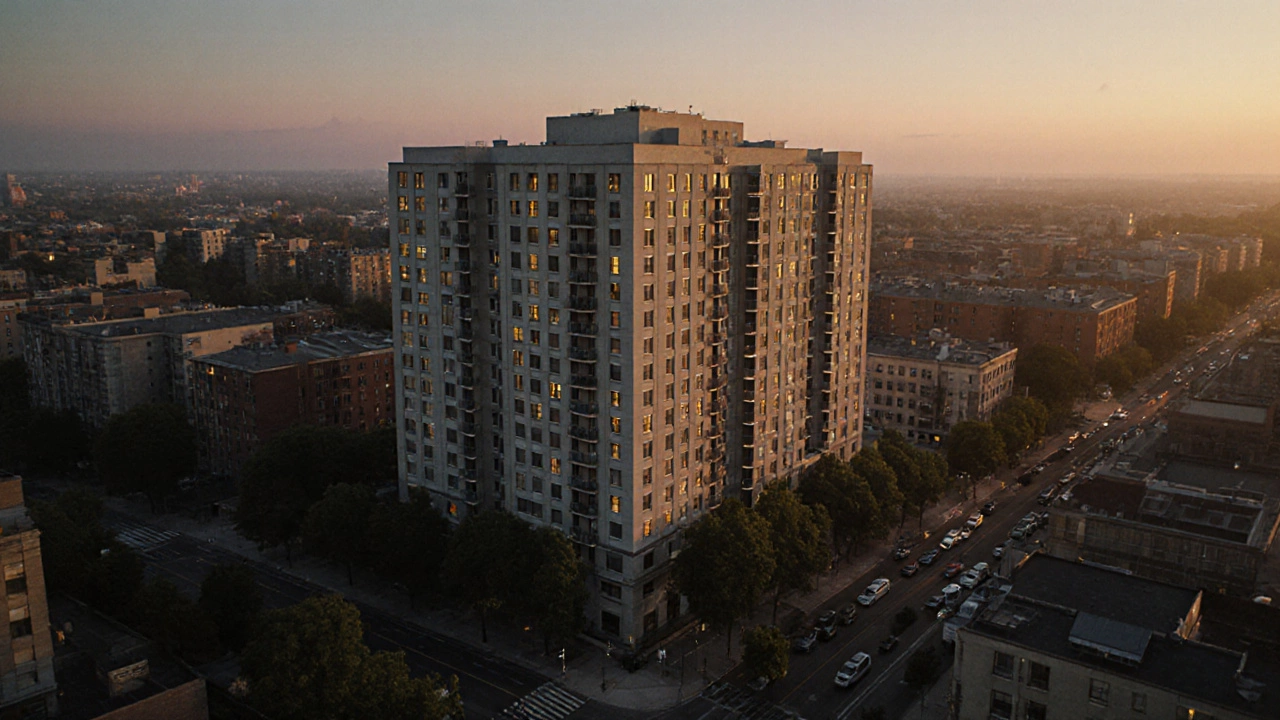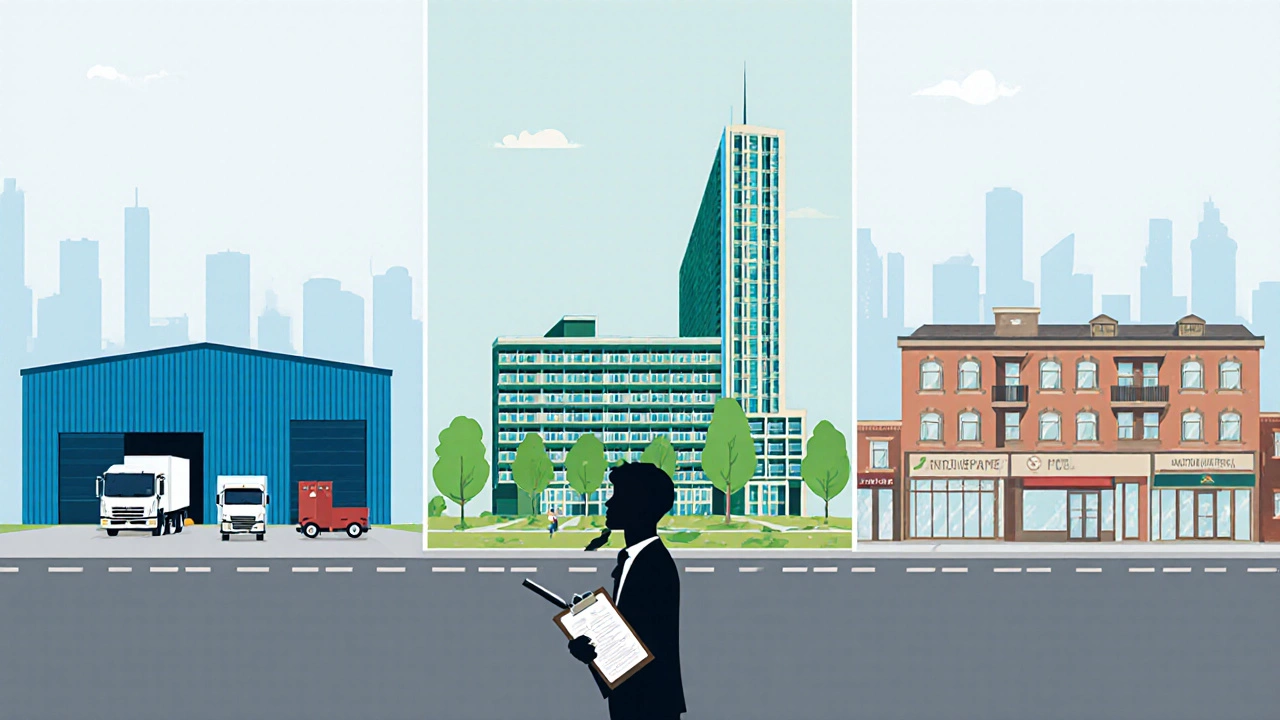Which Rental Property Type Yields the Highest Profit?

Oct, 21 2025
When investors ask, most profitable rental property, the answer isn’t a one‑size‑fits‑all. It depends on markets, financing, and how you count cash flow. In this guide we break down the major rental property categories, the numbers that matter, and a step‑by‑step way to pick the right asset for your goals.
Quick Takeaways
- Multi‑family buildings typically lead the profit chart with cap rates between 5‑7% in strong metro areas.
- Short‑term vacation rentals can out‑perform on cash‑on‑cash return, but they demand active management and seasonality awareness.
- Industrial warehouses and office spaces offer stable income in 2025 thanks to e‑commerce growth and hybrid‑work trends.
- Location, operating expenses, and tenant turnover are as critical as the property type itself.
- Use a simple three‑step framework - define metrics, compare data, and match to your risk tolerance.
Key Profitability Metrics You Need to Track
Before we rank property types, let’s get clear on the numbers investors use daily.
- Cap Rate is the annual net operating income divided by the purchase price. It shows raw yield before financing.
- Net Operating Income (NOI) equals gross rental income minus operating expenses (property management, repairs, taxes, insurance).
- Cash‑on‑Cash Return measures the cash flow you actually keep after debt service, expressed as a percentage of your cash investment.
- Occupancy rate, tenant turnover cost, and average lease length also affect the bottom line.
Rental Property Types - Definitions and Microdata
Below are the most common rental categories in the U.S. market today. Each one is marked up once with Schema.org Thing microdata so search engines can hook onto the entities.
- Multi‑family Building is a property that houses two or more separate residential units under one roof, often ranging from duplexes to 100‑unit complexes. These assets benefit from economies of scale and typically generate higher aggregate NOI.
- Single‑Family Home is a detached residential structure designed for one household. They attract families looking for stability, but each unit carries the full burden of vacancy.
- Student Housing caters to college or university students, often located near campuses. Lease terms are short (semester‑based), and rent premiums can be 15‑20% above market for standard apartments.
- Short‑Term Vacation Rental (e.g., Airbnb, VRBO) rents rooms or whole homes on a nightly basis. High nightly rates can boost cash‑on‑cash, but the model is sensitive to tourism trends and local regulations.
- Industrial Warehouse provides space for storage, distribution, or light manufacturing. The shift toward e‑commerce has kept demand strong, leading to stable cap rates of 5‑6% in many markets.
- Office Space rents desks or entire floors to businesses. Hybrid‑work policies have reshaped demand, but well‑located Class‑A assets still command 4‑5% cap rates.
- Retail Storefront houses shops, restaurants, or service businesses. The sector has seen uneven recovery post‑pandemic; prime locations can still achieve 5‑7% yields.
- Mixed‑Use Property blends residential units with commercial space on the same site. Diversification of income streams can smooth cash flow volatility.

Profitability Comparison Table (2025 Data)
| Property Type | Avg. Cap Rate | Avg. NOI (% of purchase price) | Avg. Cash‑on‑Cash Return |
|---|---|---|---|
| Multi‑family Building | 5.8% | 6.2% | 8.5% |
| Single‑Family Home | 4.6% | 4.9% | 7.0% |
| Student Housing | 6.5% | 7.0% | 9.2% |
| Short‑Term Vacation Rental | 7.2% | 8.1% | 12.4% |
| Industrial Warehouse | 5.5% | 5.8% | 8.0% |
| Office Space | 4.9% | 5.3% | 6.8% |
| Retail Storefront | 5.2% | 5.6% | 7.5% |
| Mixed‑Use Property | 5.9% | 6.4% | 9.0% |
Beyond Numbers - What Drives Profitability?
Even the best‑looking table can mislead if you ignore real‑world factors. Below are the top five drivers that tilt the profit scale.
- Location Quality: Proximity to employment hubs, universities, or tourist attractions boosts demand and rent premiums.
- Management Intensity: Short‑term rentals need daily cleaning, dynamic pricing, and guest communication; multi‑family assets often run with a property‑manager for a fixed fee.
- Regulatory Environment: Cities like Los Angeles have strict short‑term rental permits; missing a license can wipe out cash flow.
- Tenant Mix Stability: Corporate leases (office, industrial) usually have longer terms and lower turnover costs than residential leases.
- Financing Structure: Higher leverage amplifies cash‑on‑cash returns but also raises risk if occupancy slips.

Choosing the Right Rental Property for Your Goals - A 3‑Step Blueprint
- Define Your Investment Horizon and Risk Appetite. If you need steady income in the next 2‑3 years, office or industrial assets with long‑term tenants may suit you. If you can handle seasonality and want higher upside, consider short‑term vacation rentals.
- Collect Local Market Data. Use sources like CoStar, local MLS, and city planning reports to confirm the cap rates in your target zip code. Look for vacancy rates below 5% for residential and below 8% for commercial.
- Run the Numbers. Plug the property's purchase price, projected NOI, and financing terms into a simple spreadsheet:
Cash‑on‑Cash = (NOI - Debt Service) / Cash Invested * 100Compare the outcome against your benchmark (e.g., 8% cash‑on‑cash). Choose the asset that exceeds the benchmark while fitting your risk profile.
Common Pitfalls and Pro Tips
Even seasoned investors stumble. Here’s what to watch out for and how to avoid each mistake.
- Pitfall: Over‑estimating rental income because you used peak season rates for a year‑round projection.
Tip: Base rent on a 12‑month average, then apply a seasonal adjustment factor. - Pitfall: Ignoring hidden operating costs (e.g., HOA fees for condo conversions).
Tip: Add a 5‑10% buffer to your expense line items. - Pitfall: Under‑capitalizing reserves for major repairs in older multi‑family buildings.
Tip: Follow the “1% rule” - set aside at least 1% of the property’s value each year. - Pitfall: Assuming a single property type works everywhere.
Tip: Conduct a micro‑market analysis; a university town may favor student housing while a suburb may favor single‑family homes.
Bottom Line - Which Property Type Wins?
There’s no universal champion, but the data tells a clear story for 2025:
- Short‑term vacation rentals lead cash‑on‑cash returns, often soaring above 12%, ideal for hands‑on investors in high‑tourism zones.
- Student housing follows closely with strong cap rates and low entry barriers in college towns.
- Multi‑family buildings provide the best blend of stable income, manageable risk, and scalability for most investors.
If you can handle active management and regulatory hurdles, the short‑term market may be the most lucrative. If you prefer predictable cash flow and less day‑to‑day involvement, multi‑family remains the safest bet.
What is the difference between cap rate and cash‑on‑cash return?
Cap rate measures the property's raw yield before any financing - it’s NOI divided by purchase price. Cash‑on‑cash looks at the return on the actual cash you put in after accounting for mortgage payments, giving a clearer picture of what you’ll earn on your out‑of‑pocket money.
Are short‑term rentals still profitable after recent regulation changes?
Yes, but only in markets that allow permits and have strong tourism demand. Cities that crack down on illegal rentals can push occupancy below 50%, eroding cash flow. Always check local licensing requirements before buying.
How much should I budget for repairs in an older multi‑family building?
A common rule of thumb is to set aside 1% of the property’s purchase price each year. For a $2 million building, that’s $20,000 annually, which covers routine maintenance and occasional upgrades.
Which rental type has the lowest vacancy risk?
Industrial warehouses and office spaces with long‑term corporate leases typically show vacancy rates under 5%, making them the most stable in terms of occupancy.
Can I combine property types in a single investment?
Absolutely. Mixed‑use developments blend residential units with retail or office space, letting you diversify income streams while sharing common infrastructure costs.